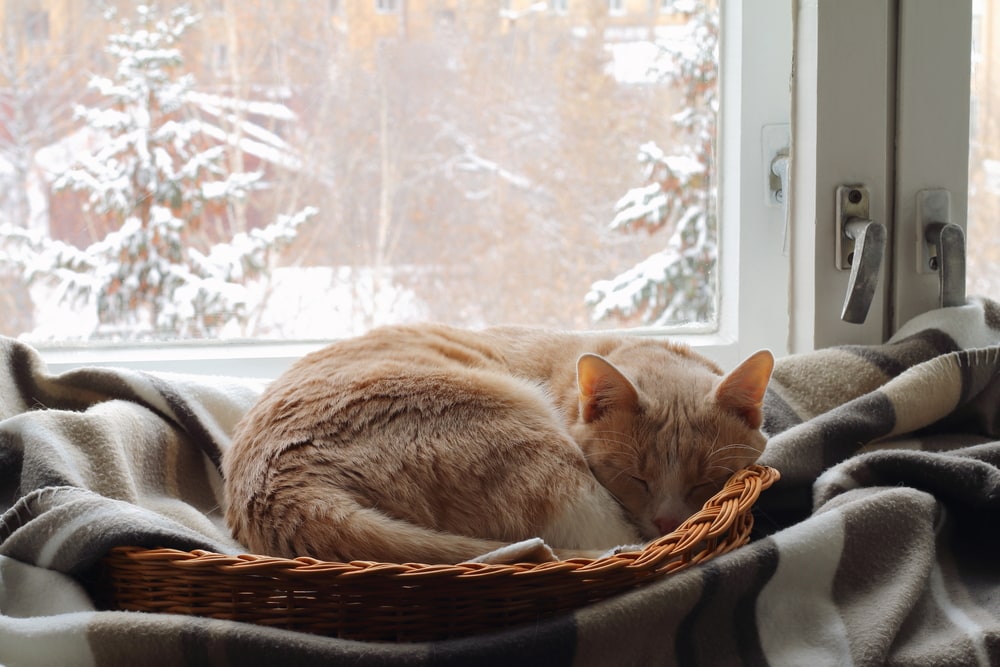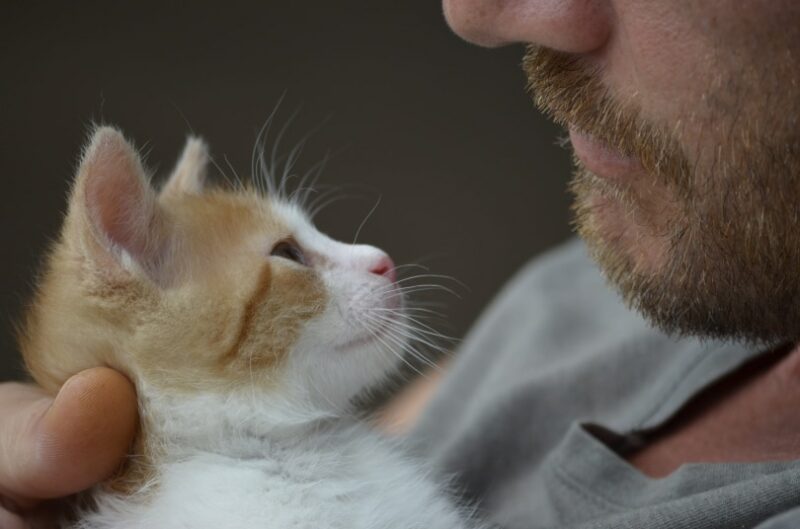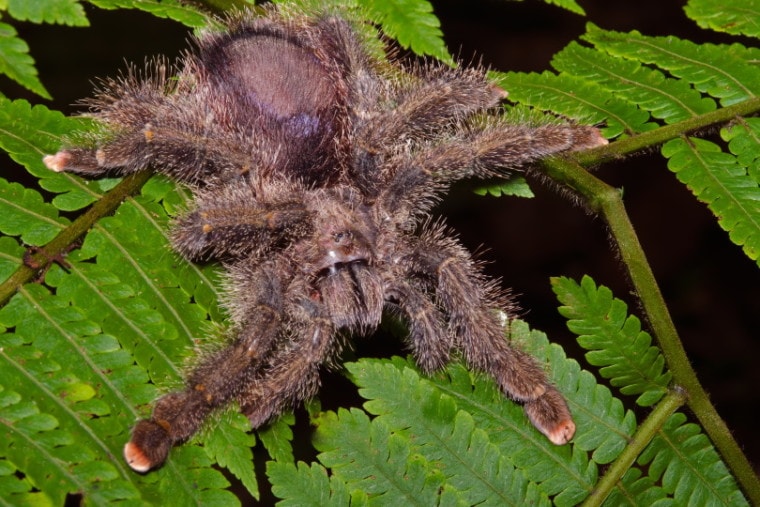
Native to the rainforest regions of northern South America, the beautiful pink toe tarantula is a medium-sized, tree-dwelling tarantula. This is a slow-moving and docile tarantula that’s appropriate for a new tarantula owner as it’s relatively easy to care for.
If you’re interested in getting a pink toe tarantula, we’ve got all the information you need to know. Remember that your tarantula will depend on you to provide it with the care it needs to live a long, healthy life.
Quick Facts about the Pink Toe Tarantula
| Species Name: | A. avicularia |
| Family: | Theraphosidae |
| Care Level: | Beginner |
| Temperature: | Between 70°F and 75°F |
| Temperament: | Docile |
| Color Form: | Black with green iridescence on the upper body and pink coloring at the end of each leg |
| Lifespan: | 3 – 9 years |
| Size: | 4.75 inches |
| Diet: | Live crickets, mealworms, roaches |
| Minimum Tank Size: | 5 gallon |
| Tank Set-Up: | Terrarium |
| Compatibility: | Can be housed with other pink toe tarantulas although it’s best housed alone to avoid cannibalism. |
Pink Toe Tarantula Overview
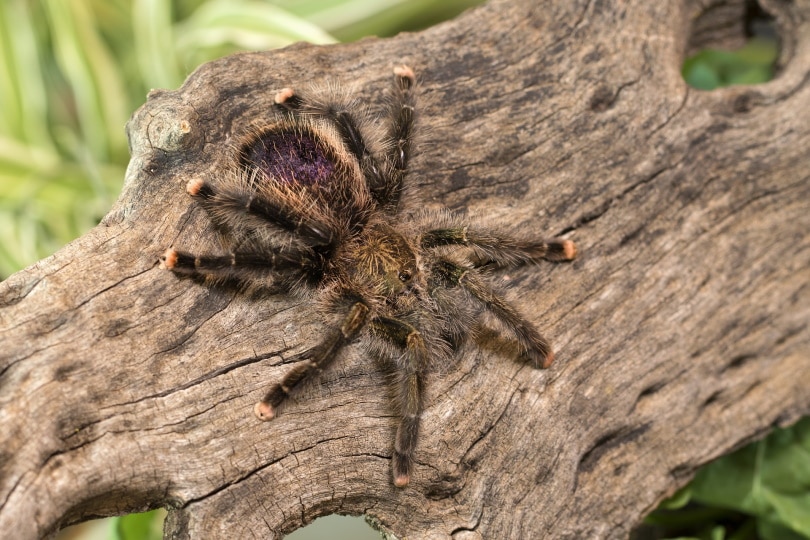
The pink-toe tarantula’s quiet demeanor, minimal space requirements, and relative ease of care make this spider a good exotic pet. This tarantula with the pink toes sprouting off its furry black legs is also called an Antilles tree spider. The males live for 2 to 3 years while females live between 6 and 9 years.
Keeping a pink-toe tarantula is fun and rewarding. As a pet, this tarantula needs a habitat that mimics the natural habitat it comes from, along with live prey. This nocturnal tarantula does well living in a glass terrarium with vertical structures to climb such as tall plants because it’s an arboreal spider that lives in trees in its native habitat.
Even though the pink-toe tarantula will spend most of its time in a restful state in its enclosure, it will move about when hunting for prey at feeding time. It’s easy to find food for this spider at pet stores because they feed on things like crickets and mealworms.
Some owners of these tarantulas choose not to handle their spiders, while others enjoy it. You can handle yours if you’re calm and gentle. The pink toe tarantula will sit on your hand or arm and stay put if you’re calm. If it becomes startled, the pink toe tarantula can quickly jump off your hand or arm and scurry away.
If you have other pets like dogs or cats, keep them in another room while you’re handling your spider to keep both parties safe just in case the tarantula becomes skittish and gets loose. If it feels threatened while being handled, a pink toe tarantula can bite. A bite from this spider causes a local reaction much like a bee sting with skin redness, swelling, and pain.
How Much Do Pink Toe Tarantulas Cost?
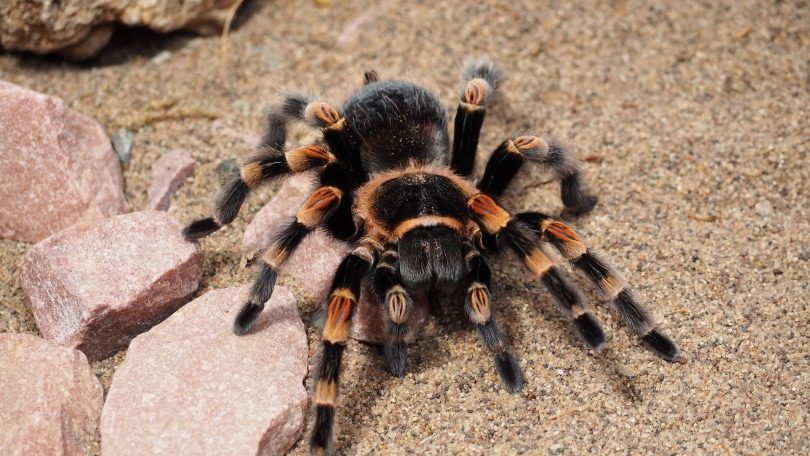
It’s not difficult to find pink-toe tarantulas for sale because they’re popular pets due to their beautiful appearance and docile nature. Check with your local pet shops to see if they have these South American arboreal arachnids for sale. PInk toe tarantulas typically cost between $25 and $45, making them inexpensive pets to buy.
If you cannot find a pink toe tarantula at a pet store, look for a breeder near you online. Another option is to order a pink toe tarantula online and have it delivered to you. If you choose this route, be sure the seller provides a live arrival guarantee.
Typical Behavior & Temperament
As mentioned earlier, the pink-toe tarantula is a docile spider that spends much of its time resting. However, when hungry, this spider is very agile and active while hunting aggressively for prey. This arachnid is primarily quiet during the day and more active at night when it typically looks for food.
The pink-toe tarantula tends to jump as it would in the wild. This behavior is sometimes mistaken as being unpredictable or flighty, but it’s not. This spider is simply more likely to flee from perceived danger rather than bite.
This tarantula has a rather peculiar behavior that involves shooting a small spray of fecal matter as a defense mechanism. This behavior only makes the pink-toe tarantula more interesting to keep.
Appearance & Varieties
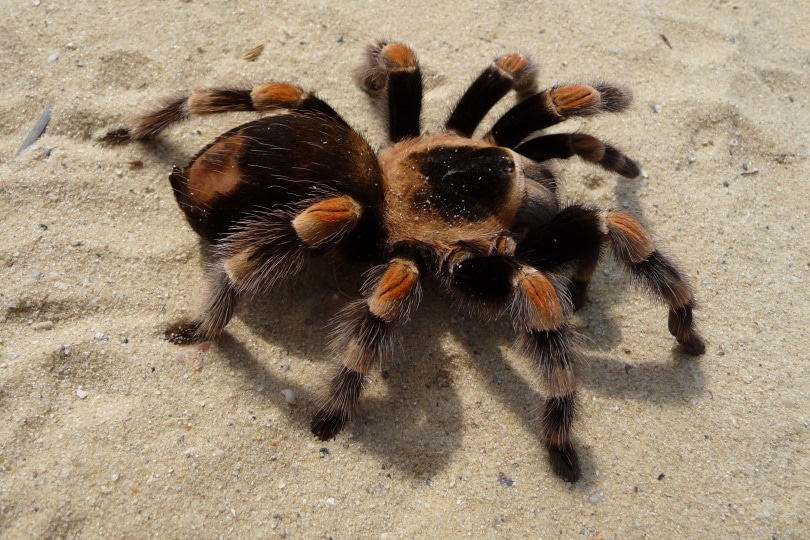
A mature pink-toe tarantula is quite hairy with a dark body and pink tips on its feet. The juvenile specimens have pinkish bodies and dark feet. This species undergoes a fascinating color reversal as it approaches adulthood at 4 to 5 years.
This is an eye-catching spider many people find attractive. While the average size is 4.75 inches in length, this spider can grow as big as 6 inches. The male of the species can often be identified by its “bulb” on the end of the frontmost feelers. There is also a “hook” on the underside of the first leg of the male.
How to Take Care of a Pink Toe Tarantula
Habitat, Tank Conditions & Setup
If you want to get a pink toe tarantula, you’ll need to pick up a few items before bringing your spider home. This spider needs a glass terrarium, a heat mat, plants, and substrate. You can also include some terrarium decor that provides your spider with places to hide.
Tank/Enclosure

A single adult pink-toe tarantula needs enough room to climb freely and move about. A 5-10 gallon glass terrarium would suffice, as long as the terrarium has a lid so your spider won’t escape.
Bedding
Even though the pink-toe tarantula spends most of its time off the ground, you’ll still need to add some substrate to the floor of the enclosure. A layer of two or three inches of substrate will add moisture to the enclosure, prevent mold, and help keep your tarantula healthy.
Temperature
The pink toe tarantula comes from a warm climate which means you have to provide it with a temperature between 70°F and 75°F. The best way to provide heat is to adhere a heat pad to the side of the glass terrarium.
Lighting
It’s not necessary to include UVB lighting for a pink toe tarantula. You can use a fluorescent bulb for daytime viewing and to provide a day-night cycle for your spider if you wish.
Humidity

The pink toe tarantula likes a humidity level between 75% and 82%. You can maintain this level of humidity by keeping the substrate moist, adding a shallow dish of water to the enclosure, or misting the inside of the terrarium. Another option is to place a water-soaked sponge in the corner of the terrarium.
Do Pink Toe Tarantulas Get Along with Other Pets?
Pink toe tarantulas should be kept away from other pets you may have at home like dogs, cats, rabbits, or gerbils. It’s never a good idea to handle your tarantula around other pets because this species is easily spooked. If it were to get near another pet, the pink toe tarantula may bite.
A pink toe tarantula bite isn’t deadly but it can cause pain and skin reactions like redness and swelling. This spider is best enjoyed by watching it inside its enclosure to keep it and your other pets safe.
It should be understood that a pink toe tarantula won’t attack a dog or cat for no reason. This docile spider will only bite if it becomes startled and can’t jump or run away from whatever it perceives as dangerous.
What to Feed Your Pink Toe Tarantula
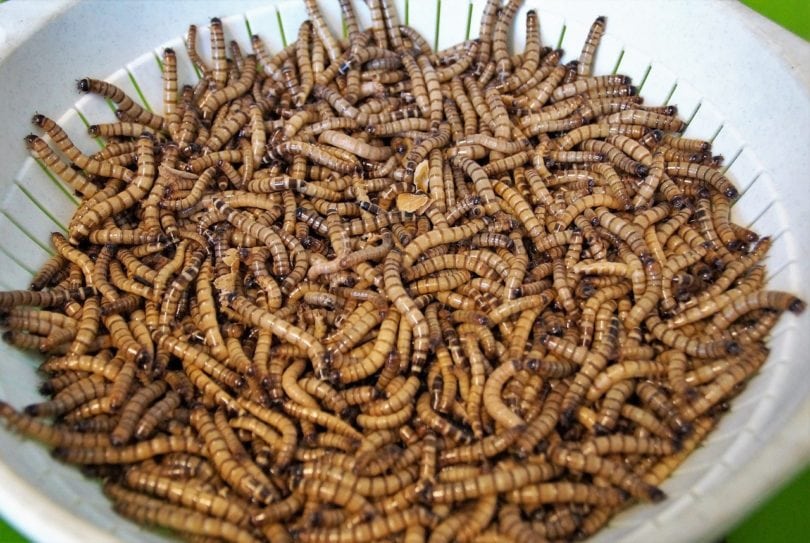
In the wild, the pink toe tarantula feeds on insects and small animals like mice, frogs, and lizards. When kept in captivity, this spider is more than happy eating nothing but insects.
You should feed your pink toe tarantula live crickets, mealworms, or roaches you can buy at most pet stores. Simply drop the live prey in the bottom of the enclosure at night when the spider is more active and ready to eat.
An adult pink toe tarantula will eat a few insects every few days. Leave the prey in the enclosure overnight and check to see if it was all eaten in the morning. If there are insects left, remove them within 24 hours so they don’t stress your spider.
Keeping Your Pink Toe Tarantula Healthy
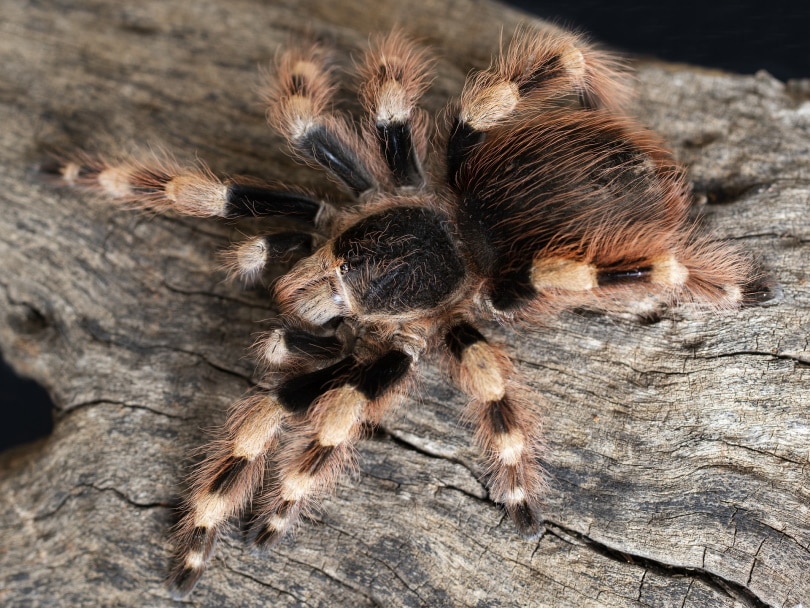
The gorgeous pink toe tarantula is an easy species to care for. You can keep your spider healthy by providing it with a clean habitat and, and live prey. You also have to be sure your spider’s habitat is warm and humid, just like it’s used to in the wild.
If you notice your pink toe tarantula isn’t eating or it’s spending most of its time sitting on the floor of the terrarium with its legs tucked under its body, it may not feel well. Speak to your vet right away or get in touch with a tarantula expert who can help.
Breeding
Breeding pink toe tarantulas is relatively easy. You need an adult female and an adult male that are both well-cared for and healthy. The female will be more receptive to breeding if she is well-fed. Therefore, give her as much food as she wants before introducing her to the male.
Before putting the male and female tarantulas together, be sure that the female has molted or shed her skin within the past six months. This is important because females won’t mate with males if they haven’t done this.
It’s now time to introduce the male into the female’s habitat and leave them alone so they start courting. The breeding process may take a few minutes or a couple of hours. Keep an eye on the two tarantulas to see when the male gets ahold of the female and breeds with her. When the breeding is over, remove the male immediately so the female won’t hunt him down and kill him.
Are Pink Toe Tarantulas Suitable For You?

The pink toe tarantula could be a great exotic pet for you if you love spiders. You must provide this tarantula with a suitable habitat and regular fresh prey.
The biggest expense associated with owning this type of spider is the habitat. Not only do you need a terrarium, but you also need a heating source, substrate, and something vertical in the habitat like live or plastic plants for the spider to climb. It’s important to maintain the correct humidity level inside the habitat which means you have to monitor the humidity regularly and make adjustments when needed.
Final Thoughts
Of all the tarantula species in the world, the pink toe tarantula is among the most beautiful. This is a calm, docile creature that spends most of the daytime hours resting. However, when it gets hungry at night, the spider springs into action to hunt down prey.
Because this spider is nocturnal and hunts for prey at night, it’s a great pet for anyone who calls themself a night owl! Watching a pink toe tarantula hunt down prey is exciting and fascinating.
Featured Image Credit: Chesapeake Images, Shutterstock


